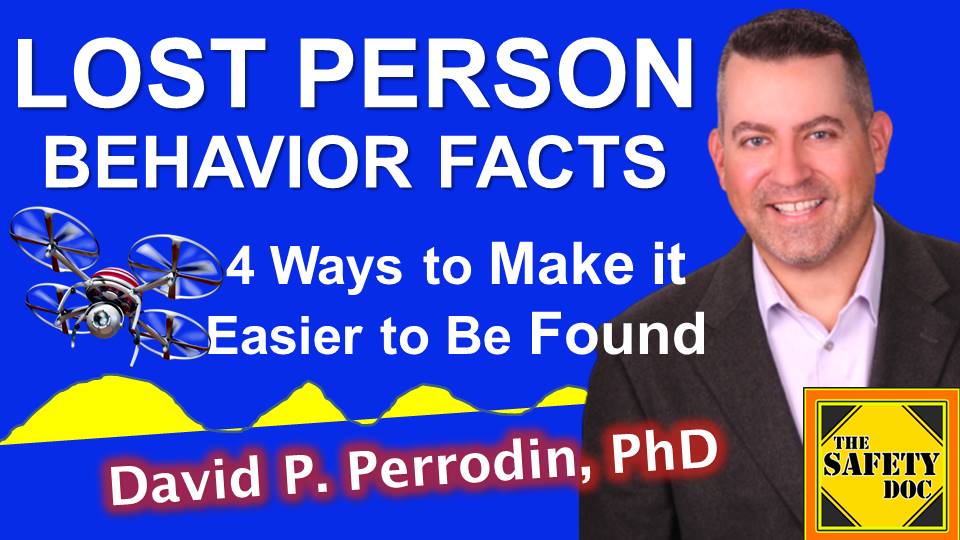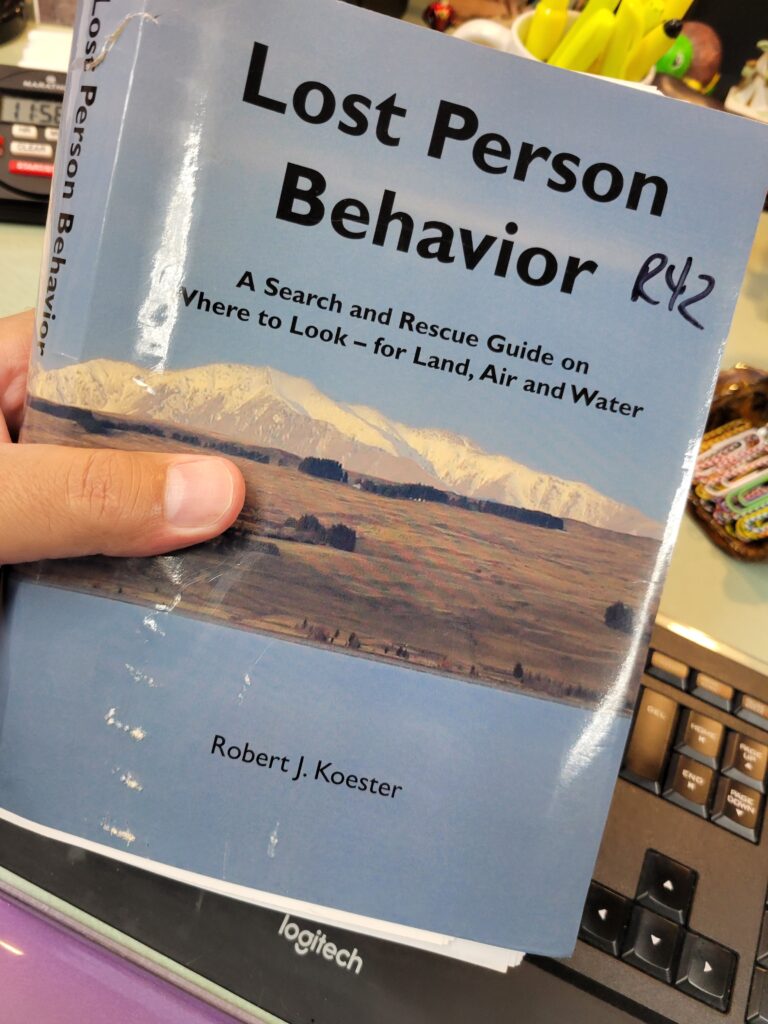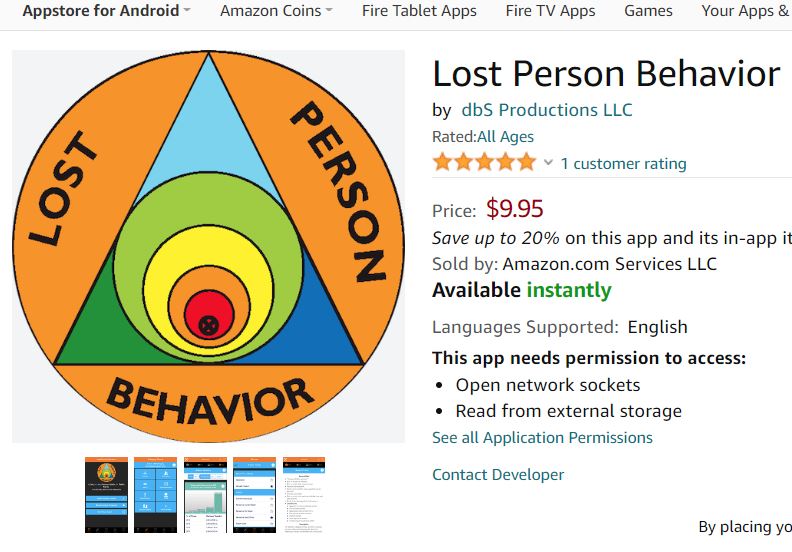Lost Person Behavior Facts | 4 Ways to Make it Easier to Be Found | SDP184
Between 2004 and 2014, in the US National Parks alone, there were 46,609 individuals who became lost and required a search and rescue campaign, which cost about $51.4 million in total (Federal Bureau of Investigation. 2018 NCIC Missing Person and Unidentified Person Statistics. Tech. Rep., National Crime Information Center). What are characteristics of lost persons and who has the discretion and authority to commit agency resources to find them?

DIRECT LINK to MP3 of this Episode: https://tinyurl.com/SDP184-AUDIO
ROBERT KOESTER: LOST PERSON BEHAVIOR. The scientific study of lost person cases to identify patterns specific to characteristics, such as age groups, disability, dementia, and so on began in the mid 1970s with Bill Syrotuck. In 2008, however, Robert Koester revolutionized search and rescue with his book, Lost Person Behavior – A Search and Rescue Guide on Where to Look – for Land, Air, and Water. He not only developed 41 categories of being “lost,” but coupled those to passage of time and terrain.

LOST PERSON BEHAVIOR APP (It’s Not Free!). The US Dept. of Homeland Security released a Lost Person App in 2015 based on data from over 150,000 missing person cases. The app provides guidance on over 40 scenarios including lost hikers, children, and dementia patients. The app is available on Amazon for $9.95 from dbS Productions LLC. The app doesn’t require a network connection so can be used anywhere.

13 FACTS ABOUT LOST PERSON BEHAVIOR. The following 13 facts are from Karen Hume’s blog post on May 17, 2017 found at https://profoundjourney.com/13-facts-lost-person-behaviour/ (1) It is a myth that we panic when lost. Instead, most of us experience shock, disbelief, and embarrassment. (2) Many people experience an irrational belief that no one is looking for them. When that happens, they don’t call out. Some even ignore a helicopter flying overhead. (3) Hansel and Gretel may have benefited from leaving a trail of breadcrumbs, but it’s not a good sign when a lost person leaves a trail of clothing or equipment. Rather, it’s an unfortunate indicator of either late stage hypothermia or exhaustion. (4) Fifty percent of searches resolve within three hours. (5) Fifty-four per cent of people are found within two miles of the point where they were last seen. (6) Hikers tend to become lost if the trail is obscured or if there are confusing trails that intersect. Rescuers do a map and terrain analysis to determine where the confusing spots are so they can look there first. (7) Hunters become lost because they are focused on game rather than navigation or time of day. If caught after dark, the typical hunter will build a shelter and then proudly walk out of the woods, unassisted, at daybreak. (8) Despondent people typically don’t travel very far. If suicidal, they hide from search teams. Despondent people are often found at the interface between two types of terrain, such as a cliff edge, or along a shoreline. (9) Lost adults will usually stay on a trail, however they may climb a hill to get a view of the area. They rarely travel in a straight line, and rarely reverse direction. (10) Children, on the other hand, look for familiar spots rather than trails. They can’t judge either direction or distance and tend to move randomly. (11) Young people of ages 13-15 often become lost in groups of two or more. Youth in a group rarely travel very far from where they were last seen. (12) Children, ages 1-3, look for the most convenient location to lie down and are, as a result, very difficult to detect. A little bit older, ages 4-6, and one of the big problems is that they won’t answer rescuers’ calls because they’ve been taught to avoid strangers. (13) Berry pickers, nature photographers, and rock hounds are often inadequately clothed or equipped. Rescuers try to put themselves in the lost person’s shoes, asking questions such as, “Where do the best berries grow?”
HOW TO GET FOUND. (1) Stop: As soon as you realize you may be lost: stop, stay calm, stay put. (2) Think: Go over in your mind how you got to where you are. What landmarks should you be able to see? Do not move at all until you have a specific reason to take a step. (3) Observe: If you are on a trail, stay on it. Blow a whistle in 3-blasts as this is a universal distress signal. Each blast should be three seconds in duration. (4) Plan: Inventory your options and determine if you can act to get yourself to a more favorable optimum.
DO SCHOOLS TRAIN FOR LOST STUDENTS? In my experience, schools don’t conduct lost-student drills or exercises. There are accounts of students with autism, for example, wandering from schools. In February, 2022, an 8-year-old boy with autism wandered away from school and walked home alone (ClickonDetroit, 2022). Children with autism might exhibit a diminished sense of fear of traffic and environmental hazards.
IS IT OK TO TRESPASS WHEN SEARCHING FOR A LOST PERSON? The initial person in charge of a search might not be from law enforcement or the fire department. It might be a school principal or the shift supervisor at an assisted living center. Especially in rural areas, several minutes might pass before emergency responders arrive on scene. Is it OK to trespass if searching for a lost person? To answer this, we need to become familiar with the “Law of Necessity.” This is a legal defense in both common and criminal law. The ‘necessity’ definition in law is a defense that arises when a person is forced to break the law in an emergency situation to prevent a greater harm from occurring. If a child with autism is lost and wandering near a river, it is presumed that a ‘reasonable’ person would believe that harm or death might be a reasonably-expected outcome. While this response is not legal advice and there’s no way of determining how a fact finder would interpret one’s application of the ‘Law of Necessity,’ it is essential that persons with discretion and ability to commit assets to a rescue effort not be hamstrung by the ‘what-ifs’ consequences of inaction.
This is episode 184 of The Safety Doc Podcast published on 08-30-2022. This podcast and blog post represent the opinions of David P. Perrodin and his guests to the show. The content here is for informational purposes only. Please consult with your safety professional regarding the unique needs of yourself or your organization.
FOLLOW
- Watch this episode on “The Safety Doc” YouTube channel https://tinyurl.com/SDP184-VIDEO
- Listen to this episode on PodBean MP3 https://tinyurl.com/SDP184-AUDIO
- Apple Podcasts http://tinyurl.com/SafetyDocApplePodcasts
- SAFETY DOC WEBSITE & BLOG safetyphd.com
- Follow David & The Safety Doc Podcast on Twitter @SafetyPhD
- Email Dr. Perrodin thesafetydoc@gmail.com
Purchase Dr. Perrodin’s books
School of Errors – Rethinking School Safety in America
The Velocity of Information – Human Thinking During Chaotic Times
